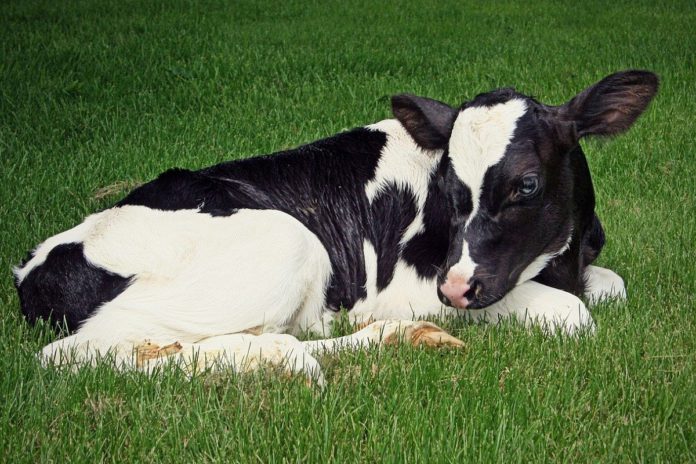Numerous Teagasc research trials show a 25% – 36% reduction in labour input required for once VS twice-a-day feeding systems during the rearing period.
According to James Dunne, Teagasc dairy specialist, carried out correctly, once-a-day (OAD) milk feeding is a practice that can greatly reduce the labour required during the rearing period.
He outlined that milk replacer can be fed OAD with no differences in weight gain or scour incidence.
Early rumen development is enhanced due to the increased consumption of both concentrates and straw.
According to Dunne, calves achieve higher dry matter intakes at an earlier age, possibly leading to two weeks earlier weaning.
Once VS TAD feeding calves
Table 1: The impact of once or twice daily feeding on calf rearing time, weight at 77 days and daily gain:

Introducing once-a-day feeding
- Dunne stated that under EU law, calves must be fed twice-a-day. A new-born calf’s abomasum is not large enough to deal with the recommended volume of milk if given in one feed. Therefore, he added, farmers should feed calves milk twice-a-day at the start and up until 28 days of age. When a calf is consuming concentrates and has developed rumen capacity, one of these daily feeds can be a dry feed in the form of calf starter pellets.
- From 28 days of age, studies show that whole milk or milk replacer can be fed once-a-day with no difference in weight gain or scour incidence. However, he noted that farmers must check claves thoroughly twice daily and fed concentrate at an alternative time to milk feeding.
- Furthermore, Dunne stressed that only healthy calves should be transitioned to OAD feeding.
- Calves are not under-fed when an OAD feeding protocol is correctly implemented; instead, they receive their daily milk allocation in one feed rather than two.
- Good quality milk replacers can be fed OAD. He advises farmers to check the bag’s label to see what product specifications are given. Specifications and mixing rates can vary between products, and it is essential always to follow the manufacturer’s recommendations. According to the Teagasc advisor, milk replacer, which contains only a relatively high level of milk-derived proteins, is preferable (skim milk powder or whey protein).
Best practice when OAD feeding – top tips from Dunne:
- Firstly, provide farmers with ad-lib access to concentrates, straw and fresh, clean water at all times;
- Like TAD feeding, ensure all calves drink their daily allowance of milk;
- If farmers implement OAD feeding, it is best practice to feed calves at the same time with milk replacer each day;
- Furthermore, it is preferable to feed milk in the morning. This will reduce disturbance and allow calves to settle down to concentrate feeding. Concentrates should also be fed at a time when milk is not being fed. For example, feed milk in the morning and concentrates in the evening;
- It is important to continue to check calves twice daily to detect any potential health problems;
- Being consistent on feeding time, temperature of the milk-fed, concentration and volume offered, and hygiene are of the utmost importance.
Further reading
For more farming advice and tips, click here.





